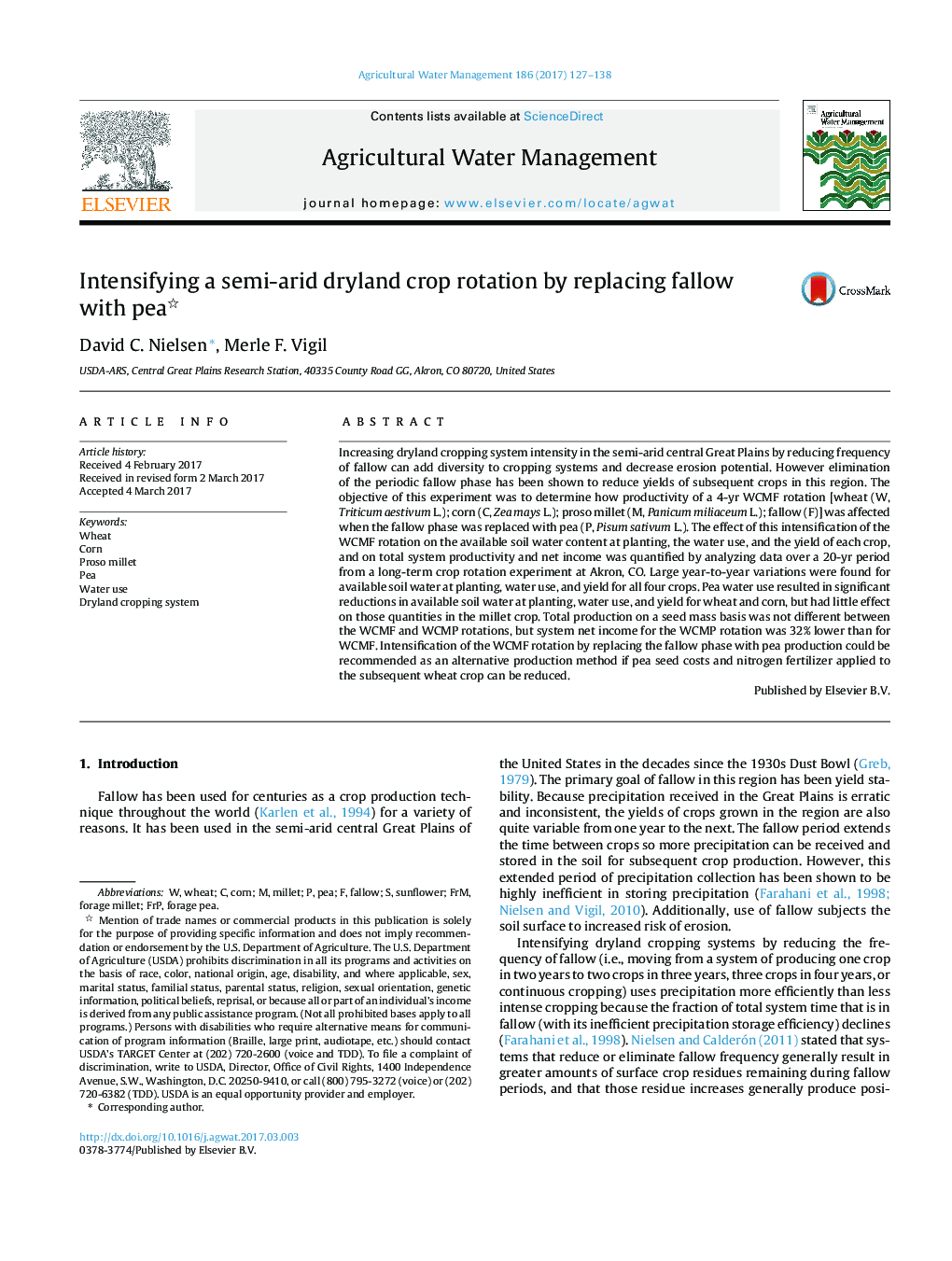| کد مقاله | کد نشریه | سال انتشار | مقاله انگلیسی | نسخه تمام متن |
|---|---|---|---|---|
| 5758542 | 1622894 | 2017 | 12 صفحه PDF | دانلود رایگان |
عنوان انگلیسی مقاله ISI
Intensifying a semi-arid dryland crop rotation by replacing fallow with pea
ترجمه فارسی عنوان
تشدید چرخش خشکی نیمه خشک با جایگزینی چمن زنی با نخود
دانلود مقاله + سفارش ترجمه
دانلود مقاله ISI انگلیسی
رایگان برای ایرانیان
کلمات کلیدی
موضوعات مرتبط
علوم زیستی و بیوفناوری
علوم کشاورزی و بیولوژیک
علوم زراعت و اصلاح نباتات
چکیده انگلیسی
Increasing dryland cropping system intensity in the semi-arid central Great Plains by reducing frequency of fallow can add diversity to cropping systems and decrease erosion potential. However elimination of the periodic fallow phase has been shown to reduce yields of subsequent crops in this region. The objective of this experiment was to determine how productivity of a 4-yr WCMF rotation [wheat (W, Triticum aestivum L.); corn (C, Zea mays L.); proso millet (M, Panicum miliaceum L.); fallow (F)] was affected when the fallow phase was replaced with pea (P, Pisum sativum L.). The effect of this intensification of the WCMF rotation on the available soil water content at planting, the water use, and the yield of each crop, and on total system productivity and net income was quantified by analyzing data over a 20-yr period from a long-term crop rotation experiment at Akron, CO. Large year-to-year variations were found for available soil water at planting, water use, and yield for all four crops. Pea water use resulted in significant reductions in available soil water at planting, water use, and yield for wheat and corn, but had little effect on those quantities in the millet crop. Total production on a seed mass basis was not different between the WCMF and WCMP rotations, but system net income for the WCMP rotation was 32% lower than for WCMF. Intensification of the WCMF rotation by replacing the fallow phase with pea production could be recommended as an alternative production method if pea seed costs and nitrogen fertilizer applied to the subsequent wheat crop can be reduced.
ناشر
Database: Elsevier - ScienceDirect (ساینس دایرکت)
Journal: Agricultural Water Management - Volume 186, 31 May 2017, Pages 127-138
Journal: Agricultural Water Management - Volume 186, 31 May 2017, Pages 127-138
نویسندگان
David C. Nielsen, Merle F. Vigil,
